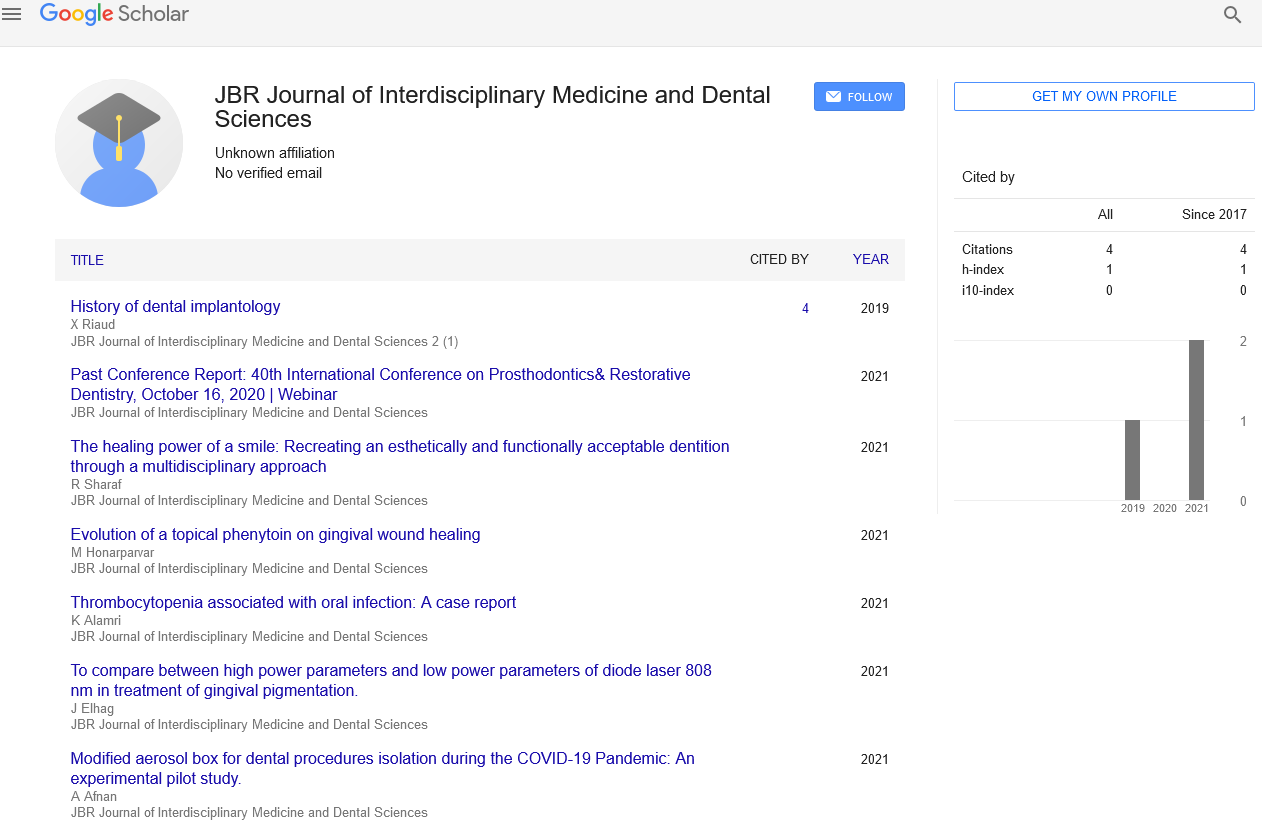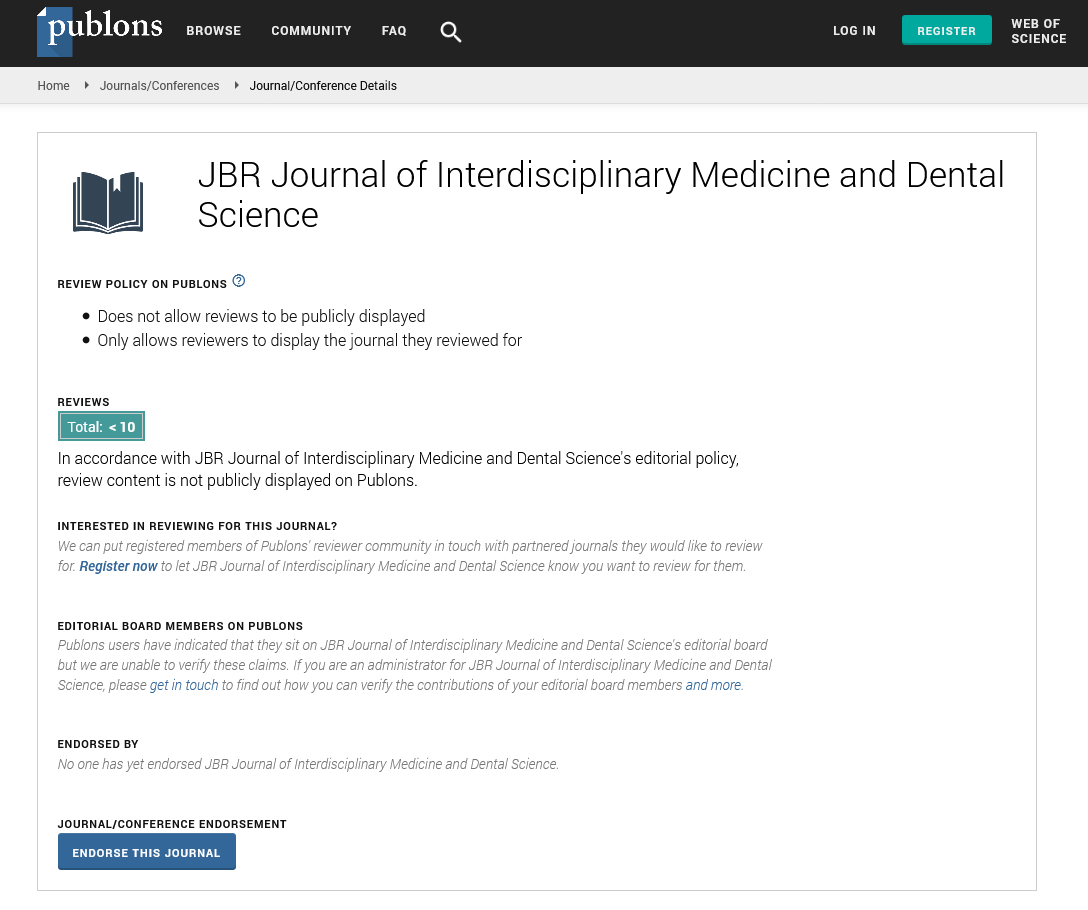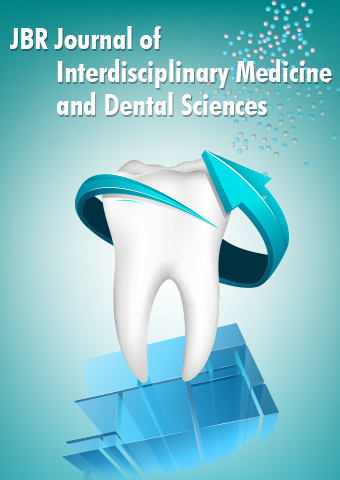Short Communication - JBR Journal of Interdisciplinary Medicine and Dental Sciences (2018) Volume 1, Issue 1
A new cavity classification LOV/DD
Oleksandr Bulbuk*1, Olena Bulbuk2, Mykola Rozhko2
1Department of Prosthetic Dentistry, Ivano-Frankivsk National Medical University, Ukraine
2Dentistry PE department, Ivano-Frankivsk National Medical University, Ukraine
Abstract
Background: Previous research have established – in the problem solving of diagnosis and treatment of hard tissues defects, a significant role belongs to the choice of tactics treatment tooth destruction. This work aims to study the diagnosis problems and cavity classification, what will facilitate objectification of diagnostic and therapeutic approaches in the dental treatment of patients with this disease.1-6
Methods: For differential estimation of defects in teeth and for a precise assessment of the strength of the composition “tooth-restoration”, we conducted a mechanic-mathematical modeling of contact interaction of restoration with tooth tissues. We also conducted anthropometric studies cavities all kinds and different groups of teeth.6-9
Results: The first division was made according to the depth of destruction (DD):
0 – the cavity is not determined (demineralization, discolorite, changes in the anatomical shape of the tooth).
1 – defeat of enamel and initial defeat of dentin, cavity depth within the outer 1/3 dentin.
2 – moderate defeat of dentin, depth of cavity in the middle third of dentin.
3 – deep dentin damage, depth of the cavity within the circle of the pulp dentin.
4 – teeth after endodontic treatment.
The next division we conducted on several parameters: Location of defects, Occlusion load, Volume of defects (LOV). All the cavities were divided into four groups. [Figure 1]
Group 1
Cavities in the area of natural pits and fissures.
Cavities with one and two-sided defects on incisors and fangs up to ½ of the length of the cutting edge with thepreserved vestibular surface and the optimum amount of dentin on it.
Cavities cervical area of all groups of teeth and free operational access to them.
Group 2
Cavities on molars and premolars of type O, with a preserved wall not less than 20% of the diameter of the crown of the tooth.
Cavities on molars and premolars of the type OM (OD) and MOD without damage to the supporting humps and the thickness of the retained walls of not less than 20% of the diameter of the crown of the tooth.
Cavities on incisors and fangs with a lesion of the vestibular surface to one third.
Group 3
Cavities type O in premolars and molars with a wall thickness of less than 20% of the diameter of the crown of the tooth.
Cavities type OM (OD), MOD with a defeat of one supporting cusp in molars.
Cavities type OM (OD), MOD in premolars and molars with preservation of wall thicknesses less than 20% of the diameter of the crown of the tooth.
Cavities on incisors with a lesion of 1/3 to ½ length of the cutting edge.
Cavities on incisors and fangs with lesion of the vestibular tooth surface up to 1/2 of the crown width.
Horizontal tooth defeat to 1/3 crown height.
Group 4 Cavities on premolars of type OM (OD), MOD with a lesion of one cusp.
Cavities of molars of type OM (OD), MOD with lesions of two or more cusps.
Cavities on incisors with a lesion of the cutting edge more than ½ its width.
Cavities on fangs with a lesion of more than ½ crown width.
Horizontal tooth defeat at ½ and more crown height.
We called our classification LOV/DD (it is an abbreviation: Location, Occlusion, Volume, and Depth of Destruction). The next division we conducted on several parameters. After removal of the affected tissues, we measured using a micrometer in the front group of teeth of the width of the preserved vestibular surface, and in the lateral group of teeth, the thickness of the preserved wall. Based on these measurements, we performed the diagnosis using LOV/DD. We propose to write it in the form of a fraction, where the numerator indicates the location of defects, LOV, and the denominator indicates the depth of decay, DD, for example: 1/0, 1/1, 1/2, 1/3, 1/4, 2/0, etc. For all types of cavities localized in the cervical margin of a tooth, we used the classification being previously described by us, where the numerator indicated the level of the cervical location of the cavity. To describe the depth of the location of the cavity margin line towards the gingival level, we used the index, the value of which was equal to the distance (expressed as an integer in millimeters) from the level of the epithelial attachment to the deepest point of the cavity margin line. If the bottom of the cavity was located supragingivally, we put the “+” sign in front of the index; if the bottom of the cavity was located subdingivally, we put the “−” sign in front of the index; if the bottom of the cavity was located at the level of the epithelial attachment, we used the “0” index. If the cavity had marginal decay of two or more sides – we chose the deepest cavity for our classification, for example: 2+1/3, 30/4 etc.10
As a result of the study, was proposed the cavity classification LOV/DD, is offered the method choice algorithm of treatment hard tissues defects, which is based on classification LOV/DD, and can serve as a selection criterion in the treatment of such pathologies.6
Conclusion: The proposed classification fills the obvious gap in academic representations of hard tissue defects, suggests the prospect of reaching a consensus on differentiated diagnostic and therapeutic approaches in the treatment of patients with this disease


